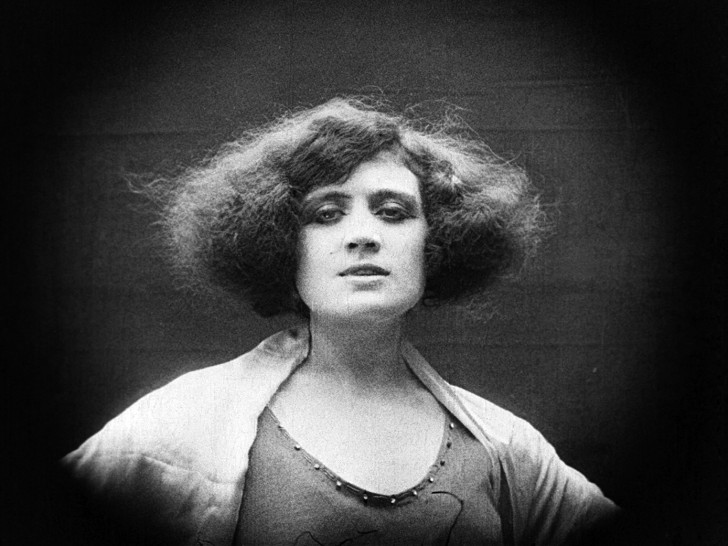
The Little Girl’s Wrong
(È Piccerella)
Recently Restored
With Eduardo Notari, Rosè Angione, Alberto Danza.
Italy, 1922, DCP, black & white, silent, 62 min.
Italian intertitles with English subtitles.
DCP source: Cineteca Nazionale
Though considered one of the first and most prolific filmmakers of early Italian cinema, Elvira Notari (1875-1946) remains relatively underrepresented in discussions surrounding film canons of the silent era. Along with her husband Nicola, Notari founded the production company Dora Film in the city of Naples in 1906. She not only directed films, but also acted, wrote, produced and distributed works released under Dora Film. Of the sixty feature films and hundreds of short films made by Notari, only three complete titles are currently known to have survived in addition to a few fragments.
Notari was first known to many through the ground-breaking work of film theorist Giuliana Bruno, whose path-breaking 1993 book Streetwalking on a Ruined Map used Notari's films, and their incomplete state, to meditate on the limits and possibilities of historiography. Since then the recent restoration of 'A santanotte and the increased study of women pioneers of the silent era has added further new perspectives to our understanding of Notari's work and legacy. Today recognized as a precursor to the Italian neoreaslism movement of the 40s and 50s, Notari sought to portray the rough and emotionally honest sides of human nature by branching private and public realms. With urban streets her preferred backdrop, she regularly employed amateur actors to capture this essence of authenticity. Her own son Eduardo made frequent appearances, and his schoolteacher Rosè Angione became one of Notari’s recurrent leading characters. As a kind of popular counterpoint to this earthiness, songs played a prominent role and added an essential element to her storytelling; film screenings of her works were often accompanied by live singers.
Dora Film was one of the few production houses at the time that focused on shipping films from Italy to the United States to be screened for immigrant audiences. These screenings were so popular that Italian Americans commissioned Dora Film to create hundreds of short dal vero documentaries that depicted the nostalgic landscapes and customs of their homeland. Unfortunately, this rough-hewn realism of Neapolitan life conflicted with the nationalistic propaganda favored by Benito Mussolini’s fascist regime; Notari’s films were often heavily censored during this period. As a result of this suppression, coupled with the rising use of sound technology in cinema and the industrialization of film manufacturing, Dora Film eventually ceased production in 1930 and Notari retired from filmmaking.
These programs of Elvira Notari’s extant works will highlight two feature films from 1922—È piccerella and ‘A santanotte—rooted in the Neapolitan melodramatic artistic form of sceneggiata that fuses popular songs and elements of the variety show; Fantasia ‘e surdato, an incomplete feature film from 1927—depicting the vulgar antics of a man whose brother is wrongfully accused of his murder—that was severely cut down and re-edited by Notari after failing to pass fascist censorship; and two fragment compilations that organically present collaged pieces of Notari’s films believed to be lost in their entirety. It is likely that these surviving films were originally hand-colored or tinted since Dora Film specialized in such techniques; however only ‘A santanotte and select fragments still contain these effects due to preservation practices of the late 1960s in which combustible nitrate films were copied onto black and white safety film, erasing most remnants of the coloring effects. The identification of a tinted US distribution nitrate print of ‘A santanotte rediscovered at the George Eastman Museum allows for a better understanding of how Notari’s films may have appeared at the time of their release.
These impassioned, melodramatic works that depict evocative, flawed realities are only a small surviving sample of the pioneering efforts of Elvira Notari. Films from the silent era that were once considered lost continue to be resurrected, instilling hope that more of Notari’s strikingly naturalistic, melodic films will resurface in the years to come. – Alexandra Vasile
FOLLOWED BY
-
Italy Has Risen (L'Italia s'è desta)
Directed by Elvira Notari.
With Clara Boni, Eduardo Notari, E. Pensa.
Italy, 1927, digital video, color and b&w, silent, 9 min.
No intertitles.
Copy source: Cineteca Nazionale






